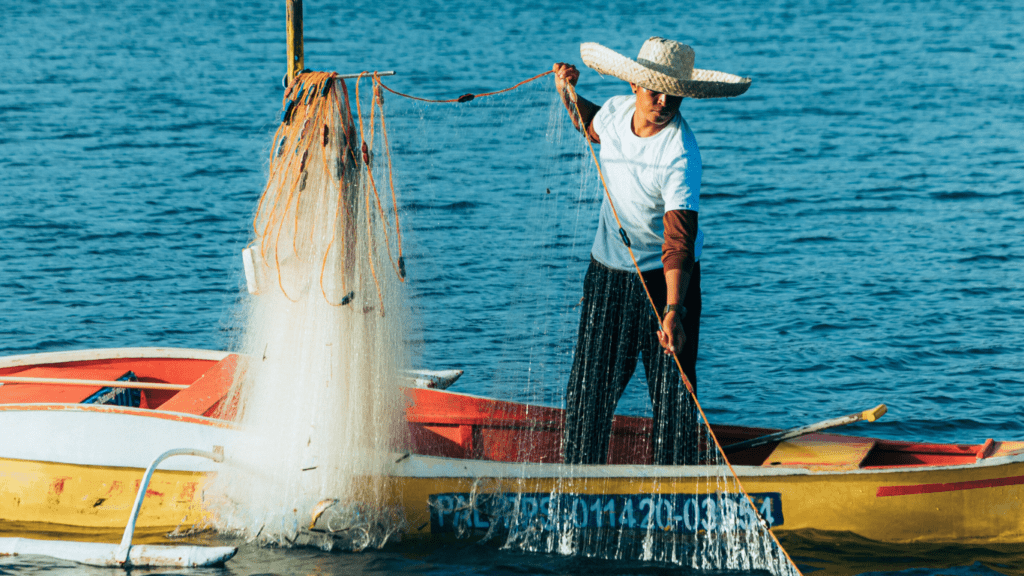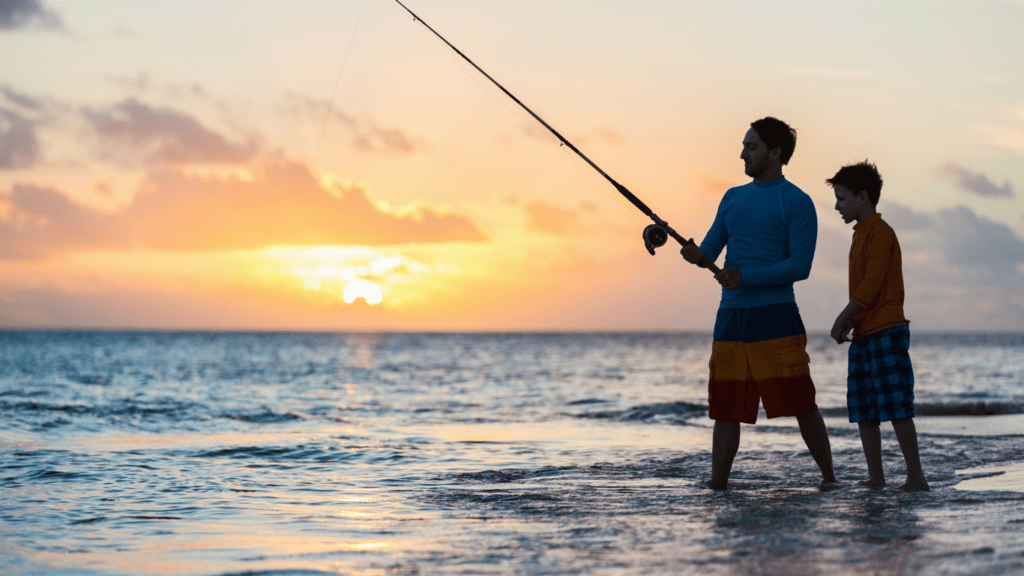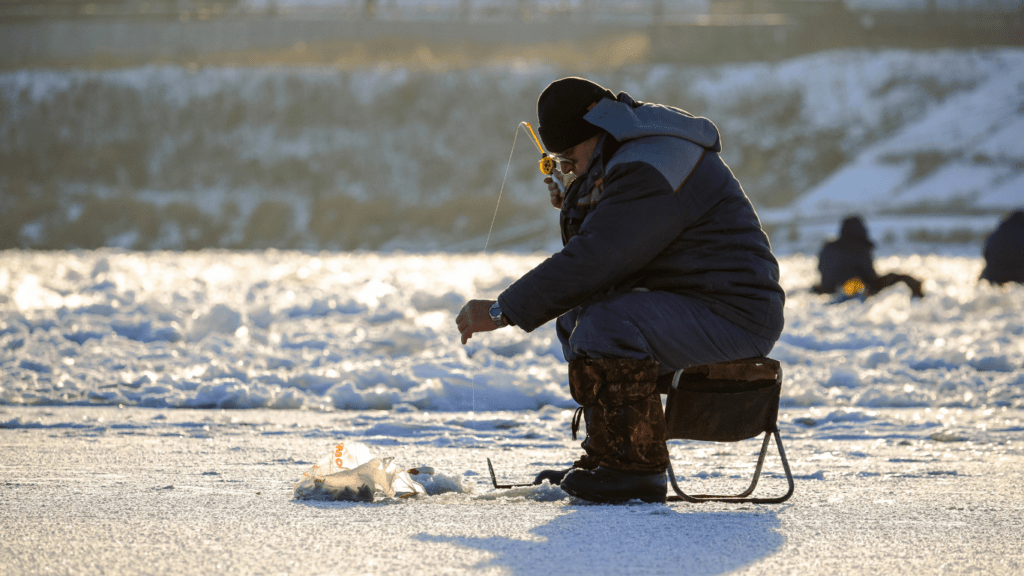Shore Fishing: Key Strategies
Shore fishing offers accessibility and close interaction with aquatic environments. Adopting the right strategies ensures a productive and enjoyable experience.
Choosing the Right Location
Scouting productive spots boosts success when shore fishing. Look for areas with visible structures like rocks, vegetation, or docks, as these often attract fish. Shaded areas can also offer promising opportunities during warm weather. Research tidal movements and water depths in coastal areas to determine locations where fish are likely to gather.
Essential Gear for Shore Fishing
Having suitable gear eliminates unnecessary challenges. Use a medium to heavy spinning rod for versatility, paired with a reel that accommodates appropriate line weights (10-20 lbs). Bring a tackle box with hooks, sinkers, swivels, and artificial bait like soft plastics or crankbaits to match target species. Pack essentials like;
- tackle bag
- pliers
- bucket
for carrying gear or bait. Wear polarized sunglasses to reduce surface glare and improve underwater visibility.
Techniques to Maximize Success
Adapting techniques increases catch rates when shore fishing. Cast near structures, drop-offs, or weed lines to target areas where fish hide. Use a steady retrieve for artificial lures or try bobber fishing for live bait, especially when targeting species near the surface. Adjust casting distance and retrieval speed based on the activity level of the fish. Staying patient and observing water activity, like splashes or ripples, helps identify feeding areas.
Boat Fishing: Key Strategies
Boat fishing provides access to deeper waters and varied fishing spots, enabling a more versatile angling experience. With the right strategies, it can be highly effective and rewarding.
Advantages of Fishing from a Boat
Access to deeper waters increases the chances of catching larger fish species, like tuna or grouper. Boats allow movement across vast areas, improving the ability to locate active fish by scanning different depths and structures. Proximity to underwater features, such as reefs or drop-offs, enhances targeting capabilities for specific species.
Must-Have Equipment for Boat Fishing
Reliable rods, such as medium to heavy conventional or trolling rods, are essential for handling larger fish. Durable reels, resistant to saltwater corrosion, ensure longevity and performance. Marine electronics, like GPS devices and fish finders, assist in identifying fishing hotspots. Anchors, safety gear, and a stocked tackle box with a variety of lures and bait are critical for success and safety.
Tips for Navigating Different Water Bodies
- Study tidal patterns to improve efficiency when fishing in coastal waters.
- In lakes, focus on submerged structures like fallen trees or rock formations.
- For rivers, follow current directions to locate fish congregating in slower-moving areas.
- Maintain boat stability in rough waters by adjusting speed and position relative to wind and wave conditions.
Comparing Shore Fishing and Boat Fishing

Understanding the differences between shore fishing and boat fishing helps tailor strategies for a successful experience. Both styles offer unique benefits and challenges depending on preferences and goals.
Pros and Cons of Shore Fishing
Shore fishing provides convenience and accessibility. It doesn’t require expensive equipment like boats or additional transportation costs. Locations such as beaches, riverbanks, and docks are often free or low-cost to access. It’s also beginner-friendly, with minimal setup and gear needed.
However, shore fishing limits access to deeper water where larger fish species are found. Environmental constraints like overgrown plant life or crowded fishing spots may affect effectiveness. Casting distance might also restrict reach compared to fishing from a boat.
Pros and Cons of Boat Fishing
Boat fishing allows anglers to explore deeper waters and multiple fishing spots. Tools like fish finders and GPS units improve accuracy, increasing chances of catching specific fish species. The mobility of a boat also offers freedom to adapt to changing fish activity.
On the downside, this style requires significant investment in purchasing or renting a boat, maintaining it, and ensuring safety equipment is up to date. Windy or unfavorable weather conditions can limit opportunities, and operating a boat demands skill and experience to navigate effectively.
Determining Which Style Suits You Best
Choosing between shore and boat fishing depends on individual preferences, available resources, and fishing objectives. Shore fishing works well for beginners or individuals seeking relaxed setups. It’s also ideal for anglers focusing on accessible local fish.
Boat fishing suits those aiming for diverse or larger catches, as well as anglers who enjoy exploring various aquatic environments. Prioritizing budget, skill level, and fishing goals helps determine the better fit.
Tips for Transitioning Between Styles
Understanding the gear requirements simplifies transitioning between shore and boat fishing. Shore fishing relies on portable equipment like medium-to-heavy spinning rods, while boat fishing often involves sturdier rods, trolling setups, and electronics like fish finders. Packing a flexible selection of gear ensures you’re prepared for both scenarios.
Adapting casting techniques enhances success in either method. When moving to shore fishing, precise casting near structures like rocks or vegetation is critical. In boat fishing, adjusting your cast to cover open waters or specific depths using downriggers can increase efficiency.
Familiarizing yourself with new environments ensures smoother transitions. Shore anglers should study tide cycles, water depth changes, and accessible areas when trying boat fishing. Boat anglers transitioning to the shore must evaluate shoreline activity, focusing on feeder streams or shaded spots where fish congregate.
Budget planning aids in adapting to the contrasting costs of each style. Shore fishing typically involves minimal expenses like basic gear and permits. Boat fishing includes costs for maintenance, fuel, docking, and advanced tools. Allocating resources wisely avoids last-minute hurdles.
Practicing safety protocols helps accommodate environmental changes. Shore fishing requires awareness of slippery terrains and unpredictable water levels. Boat fishing demands life jackets, navigation skills, and weather preparation for extended trips. Both methods benefit from planning for emergencies.





